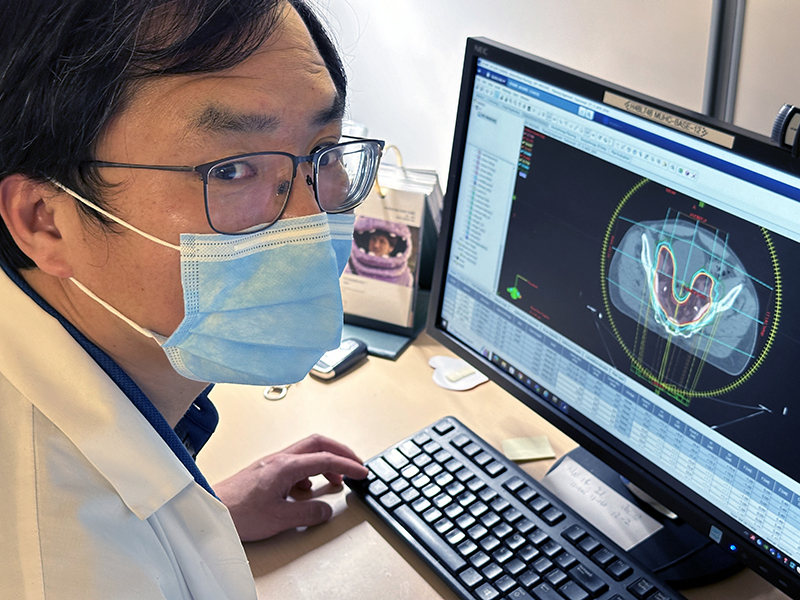Radiation Oncology Technologists: At the heart of treatment and patient support
Technologists working in radiation oncology form a very unique team. They play a vital role when it comes to administering radiation treatments to patients.
"We are in contact with patients every day during their treatment and we have a front-row seat to observe their reaction to it. These details can then be shared with the multidisciplinary team, which is always ready to step in when needed," explains ReetaBasdeo, Technical Coordinator in Radiation Oncology.
Highly precise treatments
Radiation treatments today increasingly target the specific area requiring treatment. The first step carried out by a technologist is to plan the equipment and positioning of the patient needed during the procedure. For the patient, this step involves a CT scan appointment.
A treatment plan is then developed. The calculations required for the plan explain the delay following the CT scan. “Urgent cases, such as spinal cord compression, are given priority,” saysDosimetry Technologist,Shi Lei Chen.
The next step involves planning; the dosimetry technologist collaborates with the radiation oncologist and physicians to determine the appropriate treatment.As the name suggests, this specialist is responsible for planning and calculating the appropriate dose of radiation required for the treatment, as well as determining the number of sessions and the duration of the treatment.Of course, this treatment plan must always be optimal.
For example, treatment for otorhinolaryngology (ENT) often requires around thirty sessions and is frequently combined with chemotherapy. Treatment for prostate cancer may require up to five sessions, while treatment for breast cancer may require between five and 15 sessions. Each radiation session can last between two and 12 minutes, depending on the type of cancer and the treatment plan. Technologists are trained to operate the equipment, including the linear accelerator. They take X-rays to verify the patient's position, perform a mini scan (CBCT) of the area of interest, and administer the treatment. There are different types of accelerators in the department, including the renowned CyberKnife. The CyberKnife is effective in treating small lesions in the brain while preserving the surrounding healthy tissue.
A 360-degree commitment
All this explains why radiation oncology technologists have a very diverse field of expertise.
“We closely follow patients from the moment they arrive at the Cedars Cancer Centre. We have technologists dedicated to scheduling patient treatments, while others ensure communication with other departments (e.g. chemotherapy, dentistry, etc.). We're involved at every stage: planning, developing and administering treatment,” says Reeta.
Administering the treatment itself is, of course, done with all necessary precautions. The technologists working near the treatment room must wear a thermoluminescent dosimeter or TLD. This ensures that they are not exposed to radiation above a certain threshold.
“The dosimeter is especially important in curietherapy, where the irradiation technique consists of introducing strong radioactive sources (iridium) in contact with or inside the tumour itself,” explains Raul Sanchez, Technical Coordinator in Curietherapy.
Empathy at every step
“We’re a close-knit team, and we need to be empathetic. The patients who come to us are often upset and looking for comfort. It’s our responsibility to provide that. That’s probably why radiation oncology technologists are so dedicated and positive—no pun intended. And let’s remind everyone: we are not radioactive,” says Elizabeth Sirois, Technical Coordinator in Radiation Oncology.
To become a radiation oncology technologist, you must complete a three-year college program. Anna Jenmowski is currently completing an internship that complements her studies at Dawson College: “It's an ideal combination of the theoretical part of our course and hands-on experience,” she tells us.
Did you know?
The government offers a scholarship of up to $12,000 for students who complete the program and work in the field for two years. Many positions are still available!











